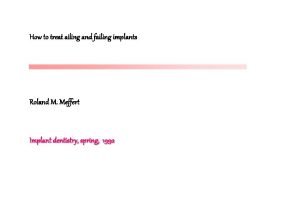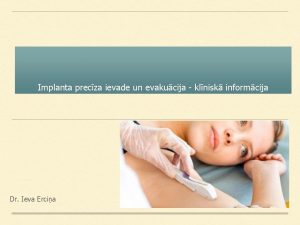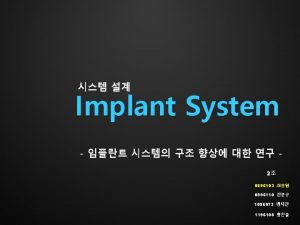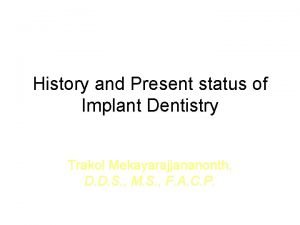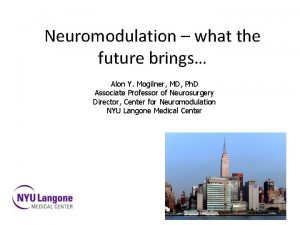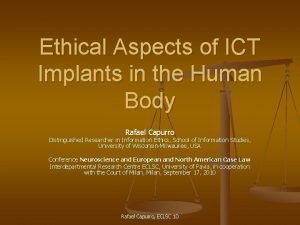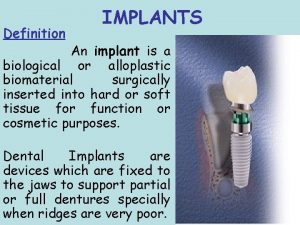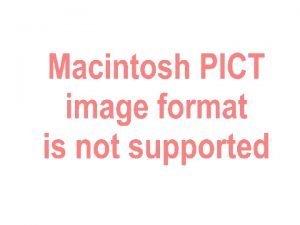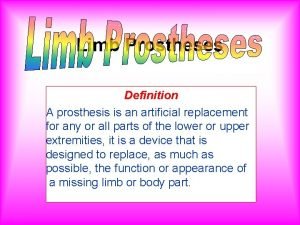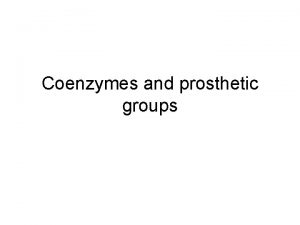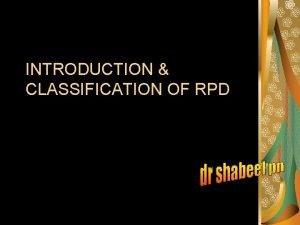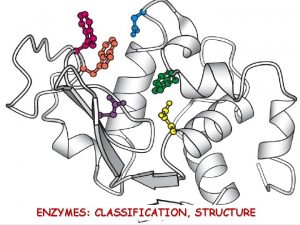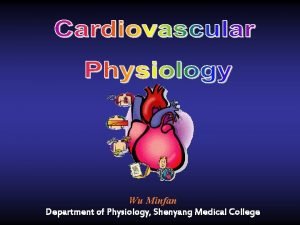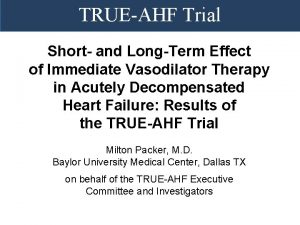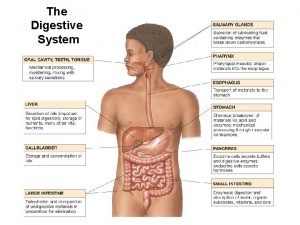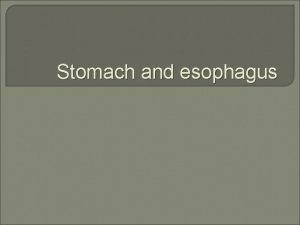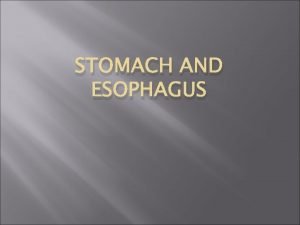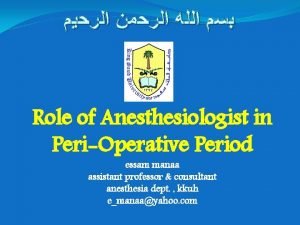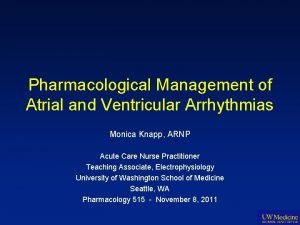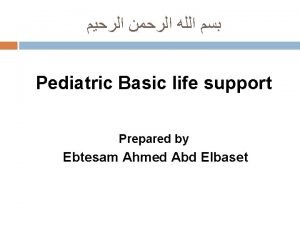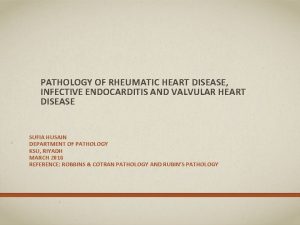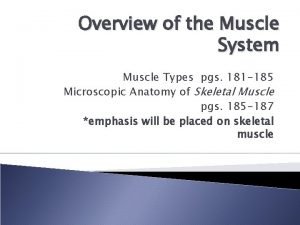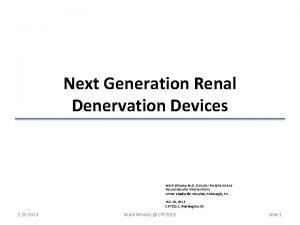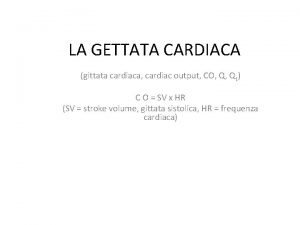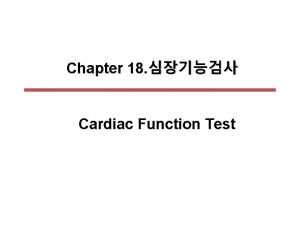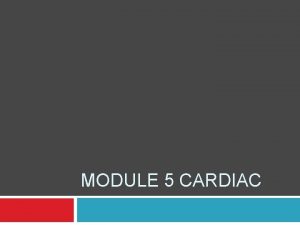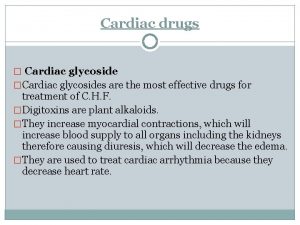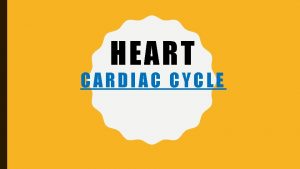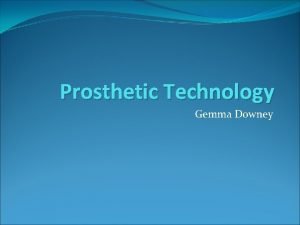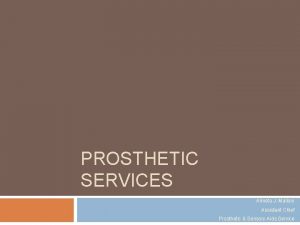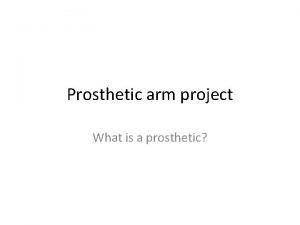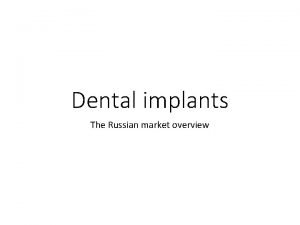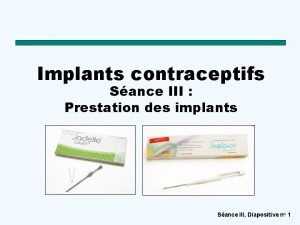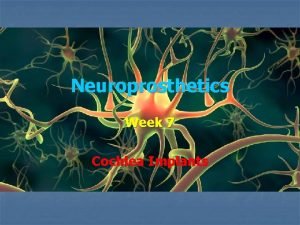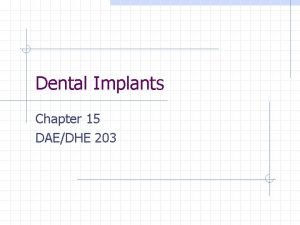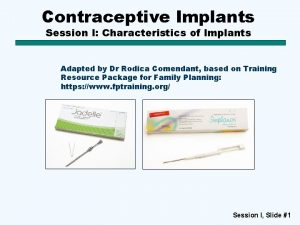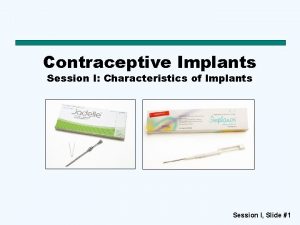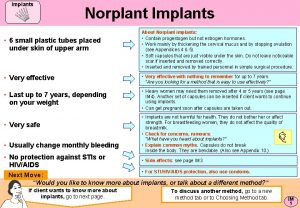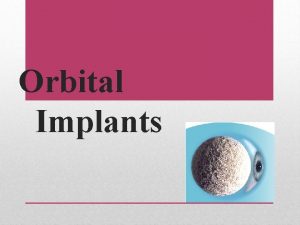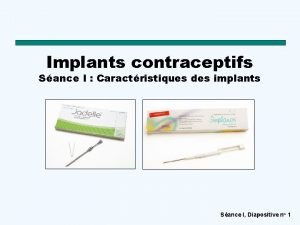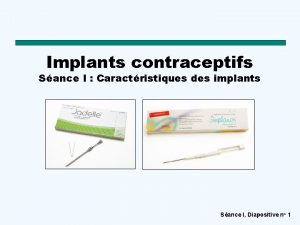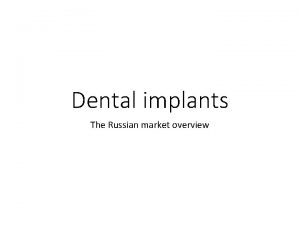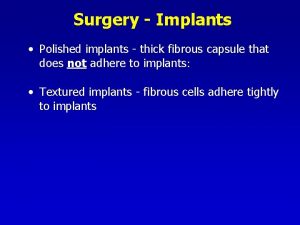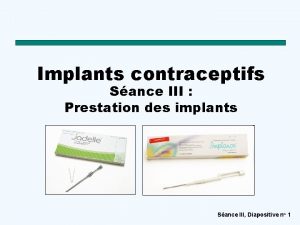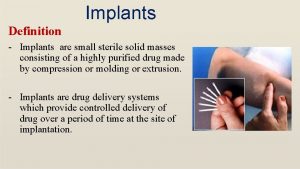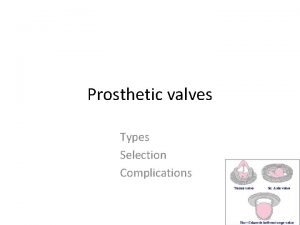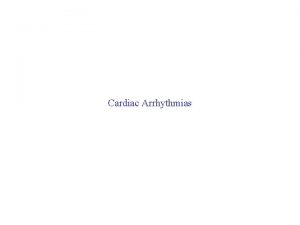Cardovascular Prosthetic Implants Types of Cardiac Implants Prosthetic































- Slides: 31

Cardovascular Prosthetic Implants

Types of Cardiac Implants Prosthetic Heart Valves n Annuloplasty Rings n Grafts n Mechanical Assist Devices n

Prosthetic Valves n May be: – Mechanical – Biologic: n Tissue from another species (aka: heterograft or xenograft): generally porcine or bovine n Human tissue (aka: homograft or allograft)

Factors in Choosing Prosthetic Valves n Mechanical – Advantages: more durable than biologic implants – Disadvantages: thrombogenic--patients require life-long anticoagulation n Biologic – Advantages: non-thrombogenic--patients do not require lifelong anticoagulation – Disadvantages: less durable than mechanical grafts, may require replacement

Prosthetic Valves n Available as aortic or mitral valves – Remember: n When replacing the Tricuspid valve, a prosthetic Mitral valve is used n When replacing the Pulmonic Valve, a prosthetic Aortic valve is used


Mechanical Valves n St. Jude Mechanical Valve (bi-leaflet tilting disc design) Pyrolytic Carbon over a graphite substrate Cuff for sewing prosthesis In place Courtesy of St. Jude Medical, Inc.

Mitral Valve Replacement with St. Jude Mechanical Valve Image courtesy of St. Jude Medical, Inc.

Biologic Valves n Biologic valves are made of: – porcine aortic valves or – Bovie pericardium cut into leaflets and sewn onto cloth-covered stents n Many biologic valves are packaged in a glutaraldehyde storage solution, and must be rinsed in three separate baths of sterile normal saline before implantation

Medtronic Mosiac® Valve (Aortic & Mitral) n Copyright Medtronic, Inc. Biologic valves made of porcine aortic valves affixed to a flexible, clothcovered stents

Carpentier-Edwards Perimount Pericardial Bioprosthesis n Trileaflet stent supported bioprosthetic valve made of bovine pericardium mounted on a flexible frame n Used to replace native or prosthetic Aortic valve Image courtesy of: Edwards Lifesciences LLC, Irvine, California.

Medtronic Freestyle® Valve n n Tissue valve made of porcine aortic root Indication: replacement of native or prosthetic aortic valves; offers the option of aortic root replacement Copyright Medtronic, Inc.

Valved Grafts n Used to replace the aortic valve and ascending aorta in cases of dissection, aneurysm or other disease/degenerative condition of the aortic valve & ascending aorta Carbo-Seal® Valsalva Ascending Aortic Prosthetic. Carbomedics, Inc. St. Jude Medical® Aortic Valved Graft with Boston Scientific Medi-Tech® Hemashield® Woven Double Velour Graft

Homograft Valves Harvested from a human cadaver donor (may be either aortic or pulmonic) n Stored frozen until ready to implant n

Autograft Valves n Used in Ross Procedure– patient’s pulmonic valve is removed and used to replace the aortic valve. The pulmonary valve is then replaced with a homograft valve.

Annuloplasty Rings • Used in repair of mitral or tricuspid valves • Rings may be: -Flexible: enhances the function of the valve -Rigid or Semirigid: remodels the annulus of the valve to its normal shape • Annuplasty ring sizers are available that are specific to the type of procedure being performed—either mitral or tricuspid valve repair Duran Annuloplasty Ring: Copyright Medtronic, Inc.

Mitral Valve Repair with Annuloplasty Ring Image courtesy of St. Jude Medical, Inc.

Grafts May be: n Synthetic n Biologic May be: n Tube grafts, patch grafts or vein grafts

Biologic Grafts n Autograft: using the patient’s own tissue -- ex: – using the patient’s saphenous vein for cardiac bypass or -– a piece of the patient’s pericardium to repair an atrial septal defect (ASD)

Biologic Grafts n n Allograft or homograft: tissue from a cadaver donor Heterograft or xenograft: tissue from another species, generally porcine or bovine

Patch Grafts n May be made of: – Synthetic fabric – Biologic tissue (ex: bovine pericardium)

Tube Grafts n n Synthetic fabric (may be woven or knitted) Used to replace a portion of a blood vessel (ex: abdominal aorta), or to bypass an obstructed blood vessel Hemashield Vascular Graft Image courtesy of Boston Scientific. © 2005 Boston Scientific Corporation or its affiliates. All rights reserved.

Mechanical Assist Devices n Designed for use as either: – A “Bridge to Transplant” n or as-- – Destination Therapy (Permanent implant)

Ventricular Assist Device (VAD) n n n Designed to aid the pumping action of the heart in patients with severe heart failure VAD can be powered by an pneumatic powered unit, electric drive unit, or a battery -powered unit Consists of an inflow tube connected to the ventricle, a pump unit, and outflow tube, and an external control unit

VADs n May be: – Left Ventricular Assist Device (LVAD) (Most commonly used assist device. Examples: Thoratec Heart. Mate®, De. Bakey VAD®) – Right Ventricular Assist Device (RVAD) – Biventricular Assist Device (Bi. VAD)

LVAD Components Inflow Tube connects the left ventricle to the pump unit n Pump n Outflow Tube connects the pump unit to the patient’s ascending aorta n Control Unit: powered by compressed air, electricity or battery n

Thoratec Heart. Mate® Outflow Tube Inflow Tube Pump Reprinted with permission from Thoratec Corporation

Thoratec Heart. Mate® with Drive Console Reprinted with permission from Thoratec Corporation

Micromed De. Bakey VAD® n This device is smaller than other currently available ventricular assist devices, making it possible to implant the Debakey VAD in small adults and children Image from Micro. Med Technology, Inc.

Complications of Mechanical Assist Devices Bleeding from suture lines n Thromboembolism n Infection n

References: n Seifert, P. (2002). Cardiac Surgery: Perioperative Patient Care Acknowledgements: n Images used with permission of: – Boston Scientific Corporation – Edwards Lifesciences LLC – Medtronic, Inc. – Micro. Med Technology, Inc. – St. Jude Medical, Inc. – Thoratec Corporation
 Ailing implant
Ailing implant Ieva erciņa
Ieva erciņa Imz implant
Imz implant Trakol
Trakol Cardiovalve
Cardiovalve Mogilner implants
Mogilner implants My father and the fig tree analysis
My father and the fig tree analysis Ict implants
Ict implants Biotolerant implants
Biotolerant implants Eadie hofstee plot
Eadie hofstee plot Purpose of prosthesis
Purpose of prosthesis Prosthetic group
Prosthetic group Prosthetic
Prosthetic Bounded saddle
Bounded saddle Prosthetic group example
Prosthetic group example Homometric regulation of cardiac output
Homometric regulation of cardiac output Cardiac distension
Cardiac distension Pharynx
Pharynx Cardiac cycle
Cardiac cycle Cardiac fundic pyloric
Cardiac fundic pyloric Nerve supply of stomach
Nerve supply of stomach Parts of stomach
Parts of stomach Smooth muslce
Smooth muslce Mets score cardiac
Mets score cardiac Amiodarone mechanism of action
Amiodarone mechanism of action Pediatric assessment triangle
Pediatric assessment triangle Heart pathology
Heart pathology Sarcoplasmic
Sarcoplasmic Mark wholey md
Mark wholey md Cardiac skeletal and smooth muscle comparison
Cardiac skeletal and smooth muscle comparison Amputation bed making procedure
Amputation bed making procedure Gittata sistolica
Gittata sistolica
